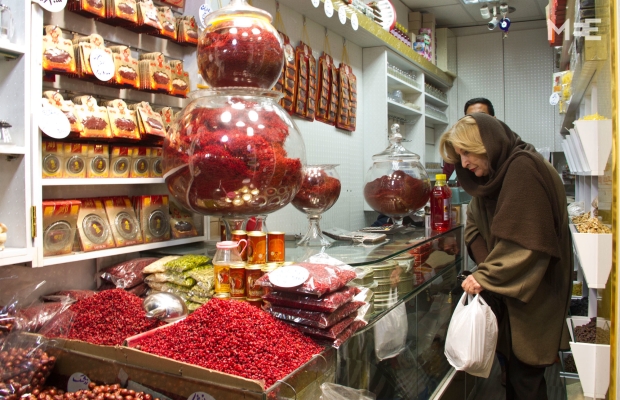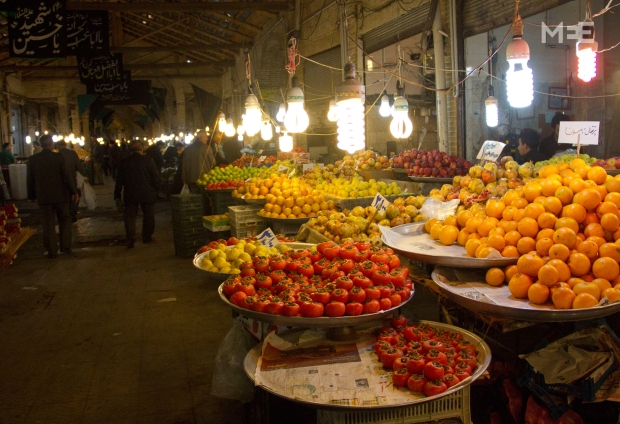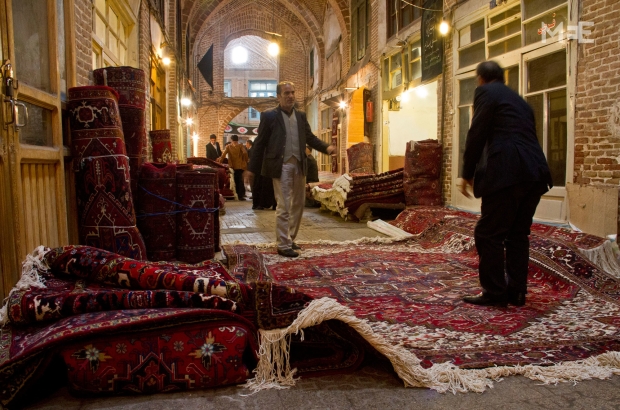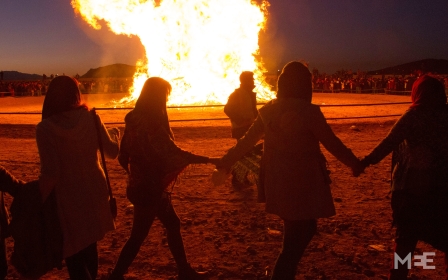The Persian bazaar still thrives in modern Iran
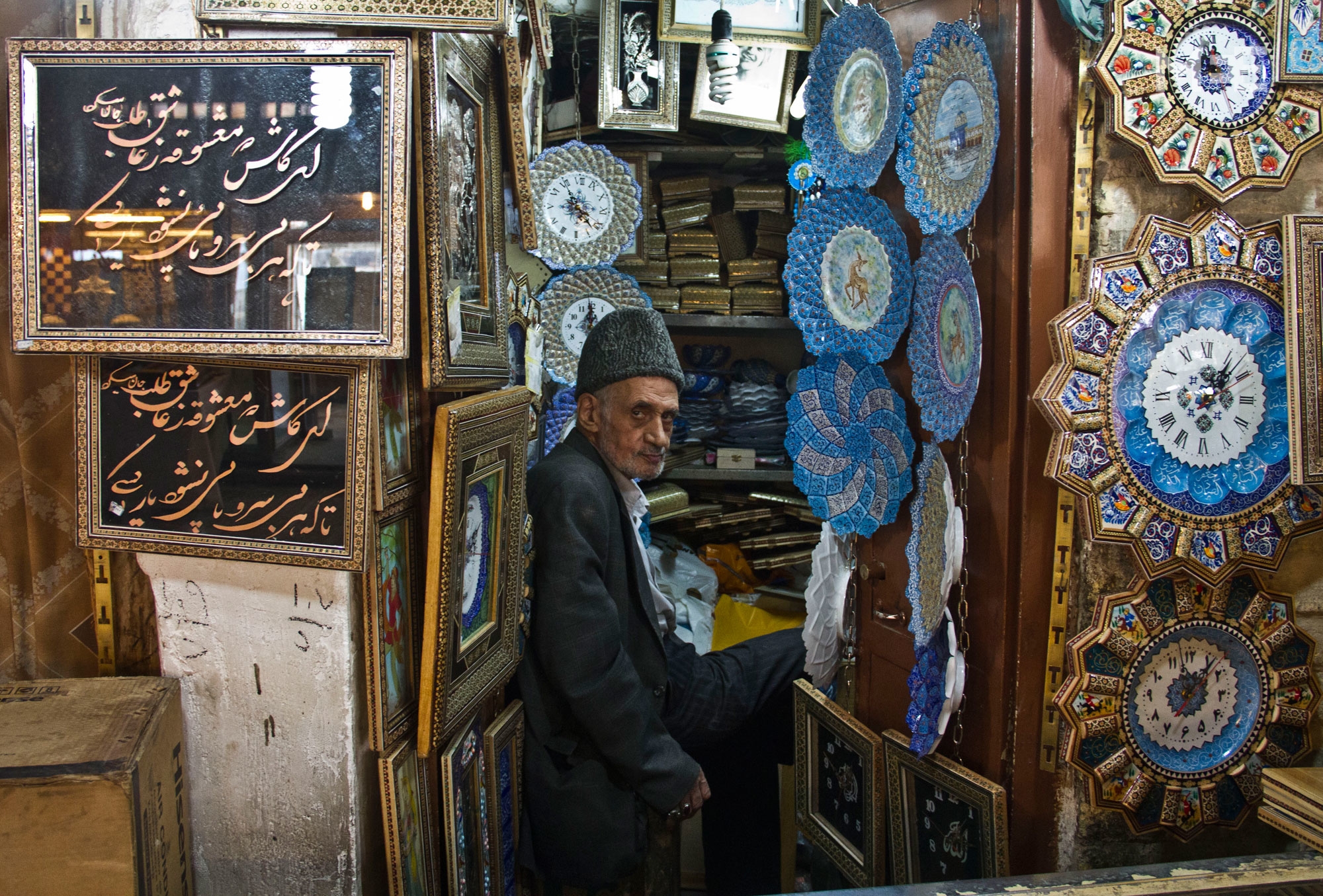
“Don’t let go of my hand or you’ll get lost.” When you go to the bazaar in any Iranian city as a kid, you will hear this sentence a thousand times. Even during the daytime it can be dark inside the covered bazaar where people are constantly elbowing each other to squeeze through the narrow corridors.
The vendors shout loudly to advertise their goods and get people's attention while porters yell out "Ya Allah, Ya Allah" (My dear God) to open the way for their heavy carts.
Experiencing a Persian bazaar is like meeting a gigantic, loutish, and ravenous monster with thousands of mouths capable of wolfing down the river of people in its path.
Yet despite this chaos, bazaars in Iran have their own kind of exquisiteness, magic and charm. As soon as one passes through its main corridors, small picturesque and calm timche and saray - the merchants’ storehouses or resting places – come into sight.
Bazaars and politics
Commercial activity is without a doubt the main goal of the Persian Bazaar, but boosting the economy is not its only task. These marketplaces also have vital importance in shaping social cohesion by functioning as centres for social, cultural, religious, political and civil activities. Bazaars in Iran can offer schools, mosques, teahouses, caravansaries and even charity centres.
In the last century, the political function of the Persian Bazaar was more visible than its other aspects. For instance, when the Constitutional Revolution began in 1905, strikes in Tehran’s Grand Bazaar - with the full support of merchants - helped the reformists regulate Iran’s first constitution.
Three years later, when King Mohammad Ali Shah shelled parliament in Tehran, the revolution continued with the leadership and backing of the bazaar of Tabriz.
The Tabriz bazaar also played a significant role during the nationalisation of the oil industry in the early 1950s. Mir Hassan Yaseyyedi, a 90-year-old carpet trader at Saray Mirza Shafie, remembers those days clearly.
He was 12 years old when he began working for his father who was a leather merchant in the bazaar. His father was one of the followers of the constitutionalists and he himself became a supporter of the first democratically elected prime minster of Iran, Mohammad Mosaddegh (1951-1953).
“When the struggle to nationalise the oil industry started, the entire bazaar backed the premier,” Yaseyyedi recalls, as he stood in front of an old photo of Mosaddeqh hanging on the wall behind him. “Some supporters of Mohammad Reza Shah attempted to forcefully open the shops, but we continued the strike until Mosaddegh triumphed.”
Strikes in bazaars have always been a clear sign of confrontation between the power holders and the economically influential people of bazaars. The 1979 revolution is another example of how the support of the merchants in Tehran, Isfahan, Tabriz and Shiraz helped in the overthrow of the Shah. Even today, any strike in a bazaar is an indication of the merchants’ dissatisfaction with the politicians’ economic decisions.
Multiple layers of bazaar life
The ability to communicate and bargain in Turkish is also a must to be able to be part of the social life in the bazaars of Tabriz and Zanjan. In Isfahan - a hotspot for domestic tourists - having the Isfahani accent is a great advantage for paying the real price of goods, not the inflated one. These are some examples of various cultural, historical and social layers that shape Persian bazaars, as each has its own subcultures and subcommunities.
But sometimes even knowing the language can be of little help when it comes to understanding what is really happening in different corners of the bazaars. For instance, every day at about noon, a group of young men holding calculators in one hand and notebooks in the other gather at Sabzeh Meidoon, one of the main entrances of the Grand Bazaar in Tehran. The seriousness of their gathering prompts one to believe that something of an open-air stock market is taking place on a sidewalk for the whole world to see.
Though they look as if they are legitimate businessmen, in truth they are the illegal traders of foreign currencies who actually influence the daily prices the government sets for these currencies.
The young men shout out numbers and names to buy and sell different currencies using a kind of jargon that sounds meaningless if one is not in on the trade. This group tends not to be friendly with strangers and if they see someone with a camera trying to take pictures anywhere in their vicinity, verbal threats are commonly used to get rid of those who are not part of the game.
In contrast to the currency traders, other traders are well-known for their hospitality and helpfulness. At the heart of Tehran’s Grand Bazaar, Haj Kazem sells tea in a two-square-metre teahouse. His fixed price for a glass of tea is 2,000 Tomans ($.57), but when local porters stop to have tea they pay a few cents for the same glass of tea.
In the far distance from the tiny teahouse of Haj Kazem, after the colourful nut shops and the fragrant Attaris - traditional Persian herbal shops and perfumeries - the deep voice of a man singing in Farsi attracts attention.
In the household shop of Haj Mansour, an old blind man with a big white beard is singing folk and religious songs hoping to receive donations from the wealthy merchants of the bazaar. Though poverty is a pressing issue in today's Iran, begging for money is not something one encounters. However, it is common to see singers wishing to exchange songs for a smile and some cash.
Haj Mansour, who 39 years ago started to work in the bazaar as an errand boy, asks his young assistant to pay the electricity and water bills of the blind man. “Everything has changed in [the] bazaar, not only the buildings and the monuments, but also the attitudes and manners,” Haj Mansour said after the bearded man leaves his shop. He recalled the old days when economic hardship was less prevalent and added: “No one takes care of other people any more.”
Middle East Eye propose une couverture et une analyse indépendantes et incomparables du Moyen-Orient, de l’Afrique du Nord et d’autres régions du monde. Pour en savoir plus sur la reprise de ce contenu et les frais qui s’appliquent, veuillez remplir ce formulaire [en anglais]. Pour en savoir plus sur MEE, cliquez ici [en anglais].



